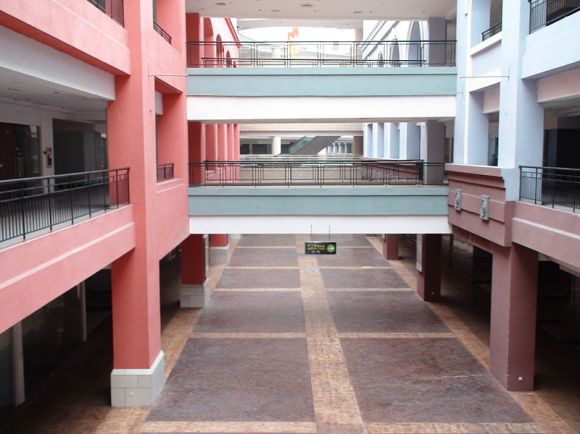
The New South China Mall, situated in Dongguan City, is considered to be the largest shopping mall in the world. According to an Emporis in 2012 it has 600,153 m2 of gross leasable area.
It boasts a hotel, an indoor/outdoor roller coaster which spans the complex, a canal with gondolas, and various replicas including the Arc de Triomphe, and Sphinx. It’s an impressive feat of design and engineering.
The only problem with the New South China Mall is that it’s almost completely empty and unused. The Emporis’ report also refers to it as a “dead mall” and, according to a CNN Japan report, the escalators are covered in tarps and the passages are dusty and lined with shutters.
So what went wrong?
■ Location, Location, Location
The mall opened in 2005, amid much fanfare and with the support of an instant noodle magnate native to Dongguan. Back then it was simply called the South China Mall.
At the time it was said that the largest shopping mall in the world would draw an average of 100,000 customers per day. It was an ambitious number, but with a population of over 8 million people in Dongguan, not too unreasonable.
The two speed bumps on the road to success for this plan was firstly a lack of stores willing to open up in an inconvenient facility like the South China Mall. According to a PBS documentary the mall has poor access by foot traffic or major highways. Located in the suburbs, it is only accessible by car or bus.
Again, this would be fine given the size of Dongguan, but that brings us to the second speed bump. The city is largely populated by migrant workers in search of factory jobs. To make matters worse, these jobs have been drying up as companies have been moving out their plants in search of cheaper labor.
According to a report by the South China Morning Post, the consumer spending of Dongguan seems to be largely tied in with the city’s lucrative prostitution industry.
■ The Undead Mall
In 2007, the mall was sold off to the Founder Group who attempted to revitalize the deserted concourses with a campaign including a name change to the New South China Mall – Living City. It doesn’t get more life-affirming than that.
Nothing changed. Most business in the mall was relegated to the fast-food shops and IMAX theatre. According to CNN Japan, a spokesperson for the mall said that store occupation was at 20 percent, and a plan was in effect to boost it to 80 percent by the end of the year.
Currently, the New South China Mall isn’t a dead mall in the sense that it simply still functions. It’s more like a zombie mall endlessly and purposefully scavenging for the brains of businesses to fill its bottomless stomach of empty floor space.
■ How Can This Happen?
So how did the South China Mall ever get off the ground in a poor location with seemingly no business strategy?
To put it simply, investors saw this as a quick sell-off for an easy profit and didn’t really care what the future had in store. The government facilitated this and other development deals like it for the employment it generated in construction.
Of course to keep these jobs something needs to be built. This has led to several projects that became ghost towns, malls, and theme parks around the country. It was also amped up by stimulus plans in response to the 2007 financial crisis.
However, despite efforts to control prices the development bubble in China appears to be shriveling just as the country is gradually changing gears to become a nation of consumption rather than export. The trick is to make the transition as painless as possible for places hit hard like Dongguan.
So, who knows? If things change in the right way by converting from manufacturing to service based industries perhaps all these zombie malls and ghost towns may one day have a use after all.
Source: CNN Japan (Japanese), Emporis, PBS, South China Morning Post (English)
New South China Mall: Official Site (Chinese)
Top Image: Wikipedia